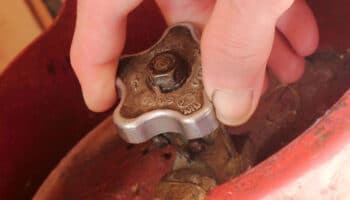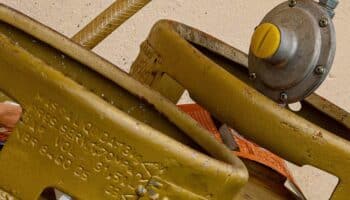We've independently reviewed this article to make sure it's as accurate as we can make it.
To find out more about our article creation and review process, check out our editorial guidelines.
Is the ceiling vent in your office space giving you the chills?
That sucks! But you might find comfort in knowing you’re not alone, as thousands of people find themselves in a similar situation daily.
But don’t worry; you came to the right place for answers. Below, you’ll find a list including the 4 easiest methods to close an ice-cold ceiling vent in no time.
Closing a ceiling vent depends on its shape and type. Generally, you can encounter circular and rectangular vents, each with different ways to be closed. If you can’t get your ceiling vents to close, covering them with insulation materials can help.
Keep reading to stop the chills!
How to Close Any Ceiling Vent
If you’re sitting for hours on end under a ceiling vent at work or home, the last thing you need is a gale-force wind constantly blowing down your neck. So what can you do to close a chilly ceiling vent?
Take a look at the steps below that will help you to close any vent in next to no time. In my experience, a step ladder is the only tool you’ll need for the job.
Method #1 Closing Rectangular Vents
Rectangular ceiling vents typically operate with a switch. You can move the switch up or down to open or close the vent. If you’d like to close a rectangular vent, do the following:
- Use a step ladder to reach the vent safely.
- Slide the switch on the vent up or down to stop the air from flowing through.
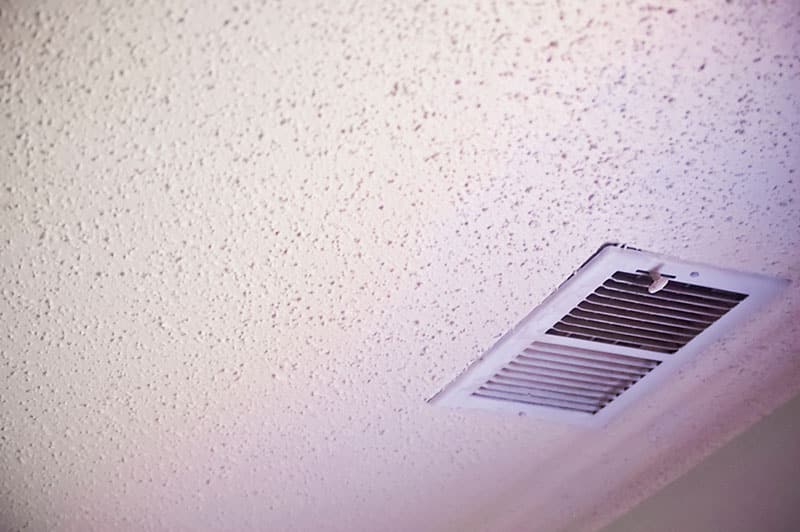
Method #2 Circular Vents
From what I’ve seen over the years, circular ceiling vents are usually installed with a dial. The dial, when turned, can open or close the flow of air. Here’s how to close a circular vent in your home or office:
- Use a step ladder to reach the vent safely.
- Turn the dial on the vent anticlockwise to stop the flow of air.
Method #3 Square Vents
If you’re wondering how to open and close square ceiling vents, it’s rather simple. Square ceiling vents operate very similarly to circular vents. Square ceiling vents also have a dial that you can turn to open or close the flow of air. To close a square vent, here’s what you should do:
- Use a step ladder to reach the vent safely.
- Turn the dial on the vent anticlockwise to stop the flow of air.
*NOTE: The dial on the vent could be located underneath the vent cover. If so, you’ll need to remove the vent cover to close the flow of air. I often find that, on some vent models, you can pull on the cover to remove it and expose the dial, while on others, you’ll need to use a screwdriver or a drill to remove the cover.
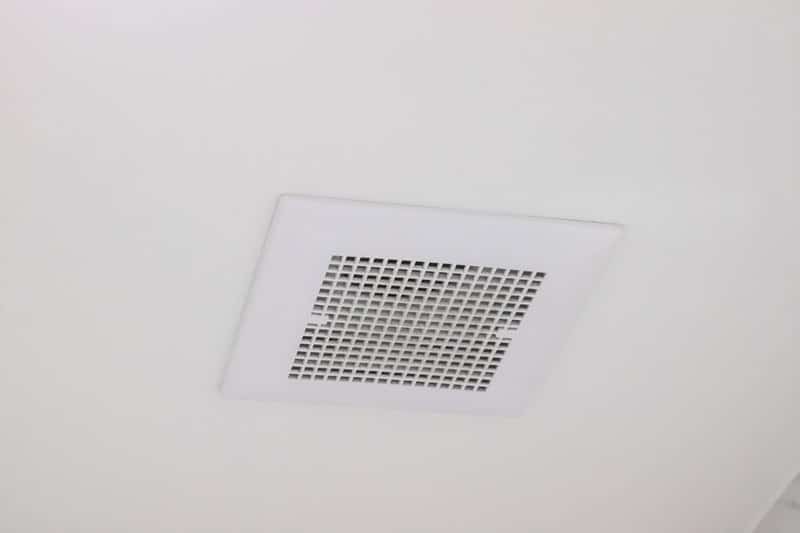
Method #4 Other Vents or Covers
So what can you do if you cannot see a switch or a dial on your ceiling vent? Don’t worry; you won’t have to settle for sitting at your desk wearing a turtleneck sweater and a jacket all year round. There’s an easy and inexpensive method that you can use to close a switchless ceiling vent.
For starters, you can get magnetic vent covers which will do a great job.
To apply magnetic vent covers, you’ll need the following:
- A step ladder.
- A marker.
- Utility knife or scissors.
- A thin sheet of insulation (rigid foam board only – not other types).
- A drill or screwdriver (depending on your vent).
- Use a step ladder to reach the vent safely.
- Use the marker to mark the size of the vent on the insulation.
- Cut the insulation to the size of the vent using a pair of scissors or a utility knife.
- Take the front cover off of the vent. If your vent cover isn’t fixed in place with any screws, you should be able to pull it off easily. If not, you must use a screwdriver or drill to remove the vent cover.
- Place the sheet of insulation over the front of the vent.
- Fix the vent cover back into place.
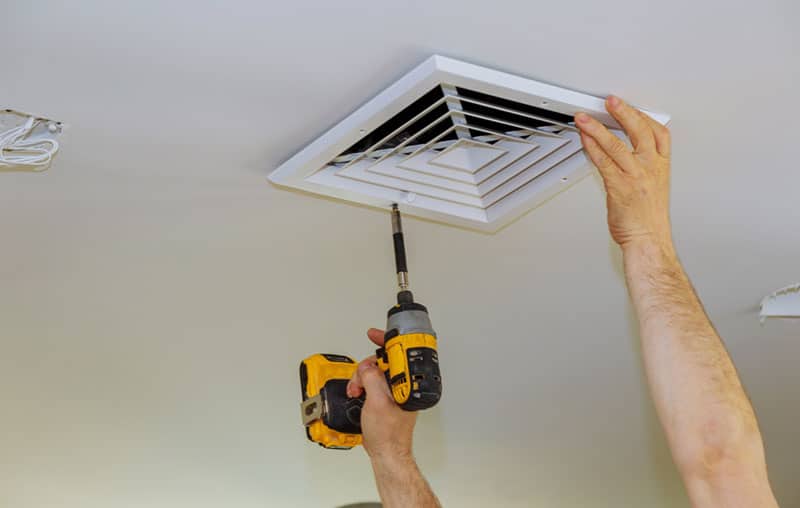
Can You Block An Air Vent?
There are a lot of factors to consider when it comes to blocking air vents at home and in the office. Blocking the vent could provide you with momentary relief from a pesky draft. But perhaps you’re wondering what the long-term effects of closing up an air vent are. That’s why up next, we will consider the effect of a blocked air vent on the following:
- Your utility bill.
- The airflow in the room.
- The temperature of other rooms in the house or office.
Your Utility Bill
Will blocking the ceiling vents in some of the rooms you’re not using cut down on your utility bill? After all, if you’re not using the room, you might as well block the vent to stop you from paying for cooling the area.
But does blocking your vents really work that way? Not quite.
When you block an air vent, your utility bill will not decrease because the air meant to flow through the blocked vent will be forced into the next available one. And the more vents you block, the further the air will travel to circulate around open vents in the house.
Rather than decreasing your utility bill, blocking some of the air vents could make you pay more because your ventilation system will try to work harder to heat and cool the rooms with blocked vents.
In other words, your heating or cooling will cycle on more often than it would if you were to keep all the vents open.
The Room’s Airflow
How will blocking the vents affect the airflow in the room?
With the vents closed, your ventilation system cannot pump fresh air from outside. Instead, the room with the blocked vents will rely on recirculated air, which could be an issue in office environments where a constant flow of fresh air is essential.
To enjoy a steady stream of fresh air in a room, you will need to keep the ceiling vent open.
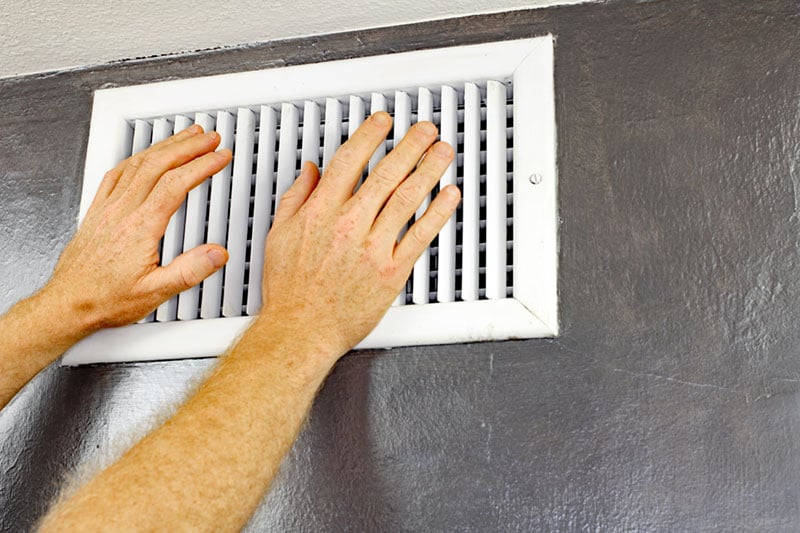
The Temperature of Other Rooms in the House or Office
So how does blocking a ceiling vent affect the temperature in the other rooms in the house?
Blocking some of the vents in your house to lighten the load on your heating system may not work as well as you think. In fact, blocking the vents could be counterproductive.
Your heating system and vents are designed and placed with the whole house in mind. If you block one vent, the system will work harder and heat the house more so warm air can flow into the cold room. So, instead of taking the pressure off the heating system, a blocked vent could increase it.
For your heating and cooling system to heat the rooms in the house properly, all vents must be open.
Conclusion
Is your ceiling vent constantly spewing old cold air? Sitting next to a drafty vent all day could be rather uncomfortable, so much so that you’re no doubt keen to get the vent blocked immediately. That’s why the steps in this article have pointed out how you can close the vent using a switch, dial, or insulation.
Has this article been useful to you? If so, then make sure you check out some of our other resources and free guides below. You could even sign up for our email list. On the site, you’ll find various solutions for daily appliance issues and home-prep tips for every season.
Have a great day!
-Craig.





